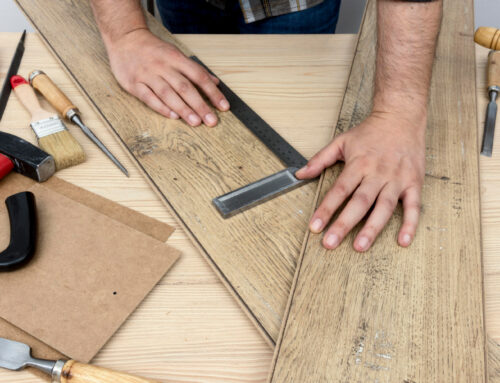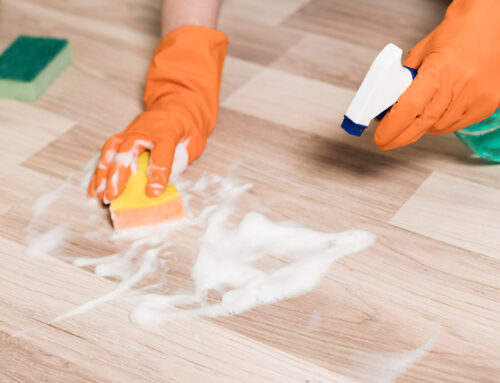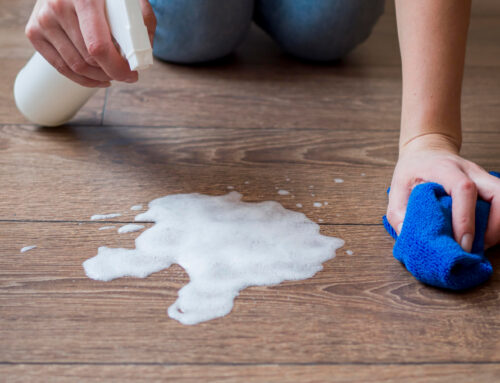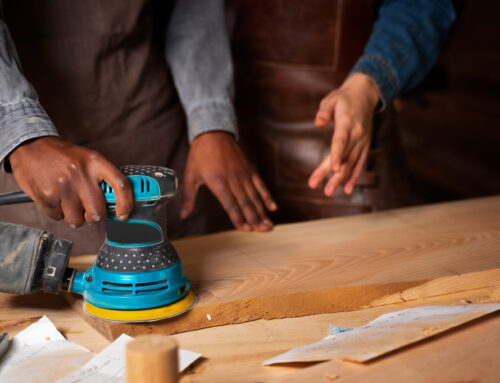Engineered hardwood has a real wood veneer over layered plywood, making it moisture-resistant, stable, and ideal for basements, kitchens, and DIY installation. Solid hardwood is a single, thick wood plank that can be refinished multiple times, offering unmatched longevity, timeless beauty, and higher resale value in climate-controlled spaces. Engineered flooring costs less upfront and works in more locations, while solid wood lasts longer and appeals to traditional buyers. Choosing the right floor depends on your space, budget, lifestyle, and long-term plans. Find your perfect hardwood at Rustic Wood Floor Supply.
Engineered hardwood features multiple layers with a real wood top, offering better moisture resistance and stability. Solid hardwood is one thick piece of natural wood that can be refinished many times. The main difference lies in construction: engineered works in basements and humid spaces, while solid offers timeless beauty and a longer lifespan in climate-controlled areas. Choosing between these two is not just about looks. It is about finding what works for your home’s specific needs, your budget, and how long you plan to stay.
Want to explore premium hardwood options? Visit Rustic Wood Floor Supply online hardwood floor store today and let our flooring experts help you find the perfect match for your space. We’ll show you samples, explain the differences, and guide you toward a decision you’ll love for years.
Shop Wholesale Hardwood Flooring Now
Understanding The Basics: Engineered vs. Solid Hardwood
Before you can make a smart flooring choice, you need to know what each type actually is. Engineered and solid hardwood might look identical once installed, but they are built completely differently. Understanding their construction helps you see why each performs better in certain situations.
What is Engineered Hardwood?
Engineered hardwood consists of multiple layers bonded together. The top layer is real wood veneer (usually 2 to 6mm thick). Below that sit layers of plywood or high-density fiberboard arranged in opposite directions. This cross-grain construction creates stability and resists expansion from moisture.
What is Solid Hardwood?
Solid hardwood is a single piece of natural wood from top to bottom. Each plank is typically ¾ inch thick and milled from one species of tree. Oak, maple, cherry, and walnut are popular choices. This traditional flooring has been used in homes for centuries.
Fact:
Solid hardwood floors can last over 100 years when properly maintained. Some historic homes still have their original hardwood from the 1800s!
Key Differences Between Engineered and Solid Hardwood
The differences between these two flooring types go deeper than construction alone. From how they handle moisture to how many times you can refinish them, each characteristic affects your long-term satisfaction.
Composition and Construction
Solid hardwood comes from a single piece of lumber, cut and milled to size. Every layer is the same wood species. While engineered hardwood uses a thin real wood layer on top, with plywood or fiberboard layers underneath. The layers run perpendicular to each other, creating dimensional stability. This construction prevents warping when humidity changes. The layered design makes engineered hardwood less likely to expand or contract. Solid wood naturally swells and shrinks with seasonal moisture changes.
Appearance and Design Flexibility
Once installed, both types look nearly identical. Engineered hardwood features a real wood surface that matches solid hardwood’s appearance. You get the same grain patterns, color variations, and natural beauty.
Both options come in various finishes:
- Matte, satin, and glossy sheens
- Pre-finished hardwood and unfinished hardwood options
- Wide planks, narrow strips, and mixed-width styles
- Oak, maple, hickory, walnut, and exotic species
Engineered hardwood often offers more exotic wood species at lower prices. The thin veneer uses less rare wood, making expensive species more affordable.
Durability and Lifespan
Solid hardwood resists daily wear exceptionally well. The entire plank is hardwood, so scratches and dents don’t reveal different materials underneath. On the other hand, engineered hard work’s durability depends on its wear layer thickness. A 4 to 6mm wear layer performs similarly to solid hardwood, while thinner layers (2mm or less) show wear faster.
- Moisture resistance:
Engineered hardwood wins here. Its cross-layered construction handles humidity swings better than solid wood. Solid hardwood can cup, warp, or gap when moisture levels fluctuate significantly.
- Refinishing potential:
-
- Solid hardwood can be sanded and refinished 6 to 10 times over its lifetime
- Engineered hardwood can be refinished 1 to 3 times, depending on wear layer thickness
Pro-Tip:
Check the wear layer thickness before buying engineered hardwood. A 4mm+ wear layer allows multiple refinishing sessions, extending the floor’s life significantly.
Installation Methods and Versatility
Solid hardwood requires nail-down installation over a wood subfloor. It cannot go below grade (basements) or directly on concrete, which means professional installation is typically recommended.
Engineered hardwood offers three installation methods:
- Floating where planks click together without adhesive, perfect for DIY
- Glue down where planks are adhered directly to concrete or plywood subfloors
- Nail down where planks are stapled to wood subfloors, like solid hardwood
Engineered hardwood works in more locations:
- Basements and below-grade spaces
- Over radiant heating systems
- Concrete slabs
- Areas with moderate humidity fluctuations
This versatility makes engineered hardwood more DIY-friendly. Many homeowners install floating floors themselves, saving on labor costs.
Looking for quality and guidance in one place? Our hardwood floor store has the finest engineered and solid hardwood options. Let Rustic Wood Floor Supply help you with the installation guide!
Get Installation Help: (678) 691-0533
Maintenance and Care
Both flooring types need similar maintenance. Sweep or vacuum regularly to remove dirt and grit. Clean spills immediately to prevent water damage. Use hardwood-specific cleaners, not harsh chemicals or excessive water. Solid hardwood benefits from periodic refinishing. Sanding removes surface scratches and allows you to change the stain color. This restoration brings floors back to like-new condition.
Engineered hardwood has limited refinishing options because once the wear layer is sanded through, you’ve reached the plywood beneath. However, many engineered floors come pre-finished with durable coatings that resist scratches better than older solid hardwood finishes. Minor repairs work similarly for both. Replace individual damaged planks rather than refinishing entire rooms.
Cost Comparison
Upfront costs:
- Solid hardwood costs $6 to $20 per square foot (material) plus $3 to $10 installation
- Engineered hardwood costs $4 to $15 per square foot (material) plus $2 to $8 for installation
Engineered hardwood typically costs 20 to 30% less overall. The floating installation option reduces labor costs significantly for DIY capable homeowners.
Long-term value:
Solid hardwood offers better return on investment because it can be refinished many times, effectively creating a new floor every 10 to 15 years. This longevity appeals to buyers.
Engineered hardwood still adds home value, but typically less than solid hardwood. However, in moisture-prone areas where solid hardwood is not suitable, engineered wood becomes the premium choice that maintains value.
Data-Driven Results:
Homes with hardwood flooring sell 2.5% faster and for 2.5% more than comparable homes with carpet or laminate, according to real estate market analysis.
Pros and Cons of Engineered Hardwood
Engineered hardwood has grown massively in popularity over the past decade. This is not just clever marketing. It solves real problems that solid hardwood cannot handle, especially in modern homes with concrete foundations and open floor plans. But it also comes with trade-offs you should understand before buying.
Major Advantages
- Moisture stability makes engineered hardwood suitable for basements, kitchens, and homes in humid climates. The layered construction resists warping better than solid wood.
- Lower cost puts real hardwood within reach for more budgets. You get authentic wood surfaces at 20 to 30% less than solid options.
- Installation flexibility means more DIY possibilities because floating floors snap together without glue or nails. Many homeowners complete the installation in a weekend.
- Works below grade where solid hardwood cannot. Basements and concrete slabs become viable hardwood spaces.
Main Drawbacks
- Limited refinishing restricts long-term restoration options because once you sand through the thin wear layer, replacement becomes necessary.
- Shorter lifespan compared to solid hardwood means eventual replacement. While 20 to 40 years is substantial, it does not match the solid hardwood century-long potential because the wear layer limits how many times you can restore the surface.
- Perceived authenticity matters to some buyers. Despite looking identical when installed, some people prefer knowing their floors are solid wood throughout.
Pros and Cons of Solid Hardwood
Solid hardwood has been the gold standard in flooring for over a century. There is a reason historic homes still have beautiful original floors after 100 years. However, solid hardwood demands specific installation conditions and ongoing care that do not work for every home or lifestyle.
Major Advantages
- Timeless aesthetic that never goes out of style. Solid hardwood has been the premium flooring choice for centuries.
- Multiple refinishing cycles extend lifespan dramatically because you can sand and refinish 6 to 10 times over the floor’s life, changing colors or restoring a like-new appearance.
- Exceptional longevity means 80 to 100+ years of use, which means this flooring often outlasts the home itself.
- Higher resale value attracts buyers willing to pay more. Real estate agents consistently report solid hardwood as a top-selling feature.
Main Drawbacks
- Expansion and contraction cause seasonal gaps and potential warping, which means humidity control becomes critical for maintaining appearance.
- Higher upfront cost requires a bigger initial investment. Quality solid hardwood with professional installation can cost $15 to $30 per square foot total.
- Installation limitations restrict where you can use it because it does not work in basements, concrete slabs, or high-moisture areas. Professional installation adds to costs.
- Climate sensitivity makes solid hardwood challenging in very humid or dry regions without proper environmental controls.
Suitability for Different Rooms and Lifestyles
Not every room in your home has the same demands. Your kitchen faces moisture and spills daily, while your bedroom stays relatively protected. Your lifestyle matters too. A household with three large dogs needs different flooring than a couple with no pets. Here is how to match flooring type to your specific spaces and habits.
Kitchens
Engineered hardwood works better in kitchens because spills and humidity from cooking favor moisture-resistant flooring. The stability prevents warping near dishwashers and sinks. Solid hardwood can work if you are extremely careful with water, which means using rugs near sinks and cleaning spills within minutes.
Basements
Engineered hardwood is your only real wood option. Below-grade spaces have too much moisture for solid hardwood. The concrete subfloor also requires glue-down or floating installation.
High-Traffic Areas
Both perform well in hallways and living rooms with a proper finish. Solid hardwood edges ahead slightly because deep scratches do not expose different materials underneath. For homes with large dogs, consider harder wood species (hickory, oak) regardless of type because softer woods like pine scratch more easily.
Pet Owners
Engineered hardwood with thick wear layers (4mm+) handles pet traffic well because the pre-finished coatings are often more scratch-resistant than older solid hardwood finishes. Well, solid hardwood allows future refinishing to remove accumulated scratches from claws, which makes this long-term restoration option appeal to longtime pet owners.
Environmental Impact and Sustainability
More homeowners now care about where their building materials come from. Hardwood flooring involves cutting down trees, so sustainability matters. Both engineered and solid hardwood can be eco-friendly choices depending on how they are sourced and manufactured. Here is what to look for if environmental impact influences your decision.
Engineered hardwood uses less solid wood per plank because the thin veneer maximizes rare species while using fast-growing plywood underneath. This efficient use of resources reduces logging pressure on old-growth forests.
Solid hardwood requires more lumber per square foot. However, responsibly harvested solid hardwood supports sustainable forestry when sourced from certified suppliers.
Look for these certifications:
- FSC (Forest Stewardship Council)
- SFI (Sustainable Forestry Initiative)
- PEFC (Programme for the Endorsement of Forest Certification)
Both flooring types can be eco-friendly depending on sourcing, so you should ask retailers about certification and origin before purchasing.
How to Choose Between Engineered and Solid Hardwood In-Store
Walking into a flooring store can feel overwhelming with hundreds of samples on display. You need a strategy to evaluate products effectively and ask the right questions. Knowing what to inspect and what information to request helps you leave with flooring that truly fits your needs instead of just what looked pretty under showroom lights.
Walk into the store with these questions ready:
About the product:
- What’s the wear layer thickness on engineered options?
- Where is the wood sourced from?
- What warranty coverage comes included?
- Can I see installation method demonstrations?
Inspect before buying:
- Check the finish quality by looking for smooth, even coating without bubbles or rough spots
- Examine the wear layer by asking to see a cross-section of engineered planks
- Review plank quality by looking for consistent color, minimal defects, and tight grain patterns
- Compare warranties because longer warranties often indicate manufacturer confidence
Test samples:
- Request samples to take home
- Place them in different rooms with various lighting
- Check how colors look against your existing décor
- Live with samples for a few days before deciding
Ask about moisture ratings if installing in basements or humid climates, and request documentation on hardness ratings (Janka scale) for high-traffic areas.
Pro-Tip:
Bring photos of your rooms, measurements, and notes about your subfloor type to the store. This helps flooring experts recommend the best options for your specific situation.
Final Verdict
Choosing between engineered and solid hardwood comes down to where you are installing, your budget, and your long-term plans. Engineered hardwood offers versatility, moisture resistance, and cost savings, which makes it perfect for basements, DIY installation, and budget-conscious renovations. Solid hardwood delivers unmatched longevity, refinishing potential, and premium resale value for climate-controlled main living areas.
Neither option is universally “better.” The right choice depends on your specific home, lifestyle, and priorities.
Your Perfect Hardwood Floor Awaits at Rustic Wood Floor Supply
Finding the ideal hardwood flooring should not feel overwhelming. At Rustic Wood Floor Supply, we stock premium engineered and solid hardwood options from trusted manufacturers, all backed by our expert guidance and customer-first service.
Schedule Your Call Today: (678) 691-0533
Frequently Asked Questions
What is the main difference between engineered hardwood and solid hardwood?
Engineered hardwood features a real wood veneer over layered plywood or high-density fiberboard. Solid hardwood is a single, solid piece of wood throughout its entire thickness.
Which type of hardwood is more durable in humid or below-grade areas?
Engineered hardwood is more stable and resists moisture and temperature changes better than solid hardwood. This makes it ideal for basements and areas with fluctuating humidity levels.
Can both engineered and solid hardwood floors be sanded and refinished?
Solid hardwood can be refinished many times throughout its lifespan. Engineered hardwood can only be refinished once or twice, depending on the thickness of its top wear layer.
Is there a noticeable difference in appearance between engineered and solid hardwood?
Both types typically look identical when installed. Engineered hardwood has a real wood surface that matches solid hardwood’s appearance with the same grain patterns and natural beauty.
Author Profile
- I have worked in hardwood flooring for the last 8 years. Use to run a company of residential crews as well as a company with gym flooring. If you need floor installation or refinishing help, I should have an answer or at least get you in the right direction.
Latest entries
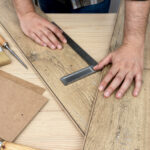 FlooringNovember 25, 2025What Engineered Hardwood Flooring Will Last Longest?
FlooringNovember 25, 2025What Engineered Hardwood Flooring Will Last Longest?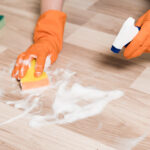 FlooringNovember 22, 2025Best Wood Floor Cleaner Liquid for Hardwood Flooring
FlooringNovember 22, 2025Best Wood Floor Cleaner Liquid for Hardwood Flooring FlooringNovember 21, 2025How To Remove Adhesive From Hardwood Floors?
FlooringNovember 21, 2025How To Remove Adhesive From Hardwood Floors?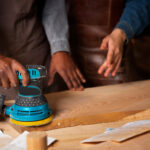 FlooringNovember 17, 2025Best Sanding Machine For Hardwood Flooring
FlooringNovember 17, 2025Best Sanding Machine For Hardwood Flooring

